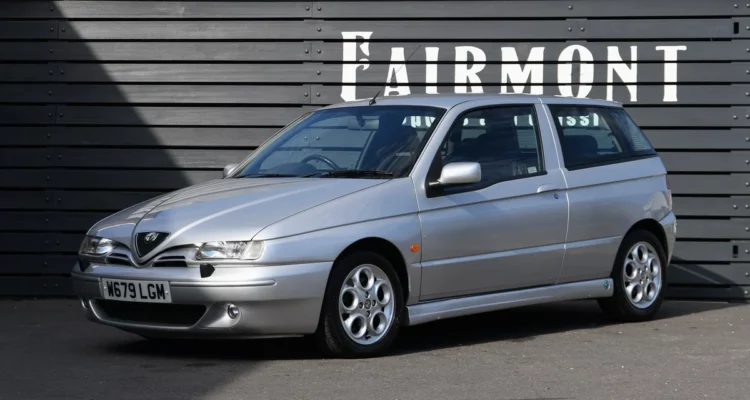Mazda RX-7 Turbo – Raddest Rag-Top
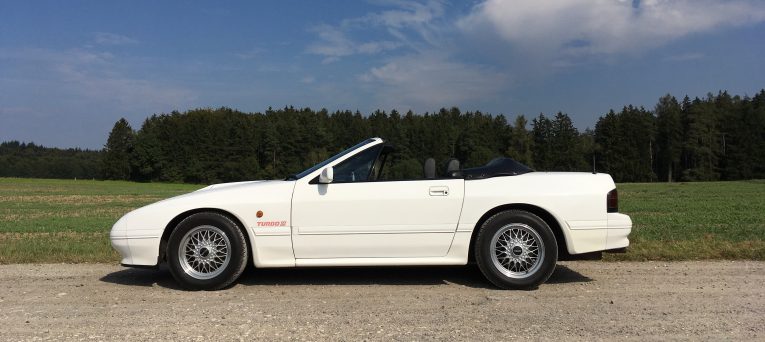
The rotary ain’t dead yet. That’s not supposition or wishful thinking – Mazda has already confirmed the range-extended version of its quirky MX-30 electrified crossover will use a compact Wankel engine rather than conventional piston-based combustion.
Not the glorious return to rotary power enthusiasts might be hoping for, but it’s quite reassuring that Mazda’s engineers are, against all odds, continuing to develop and refine the powerplant that only they have seen fit to persist with after others gave up.
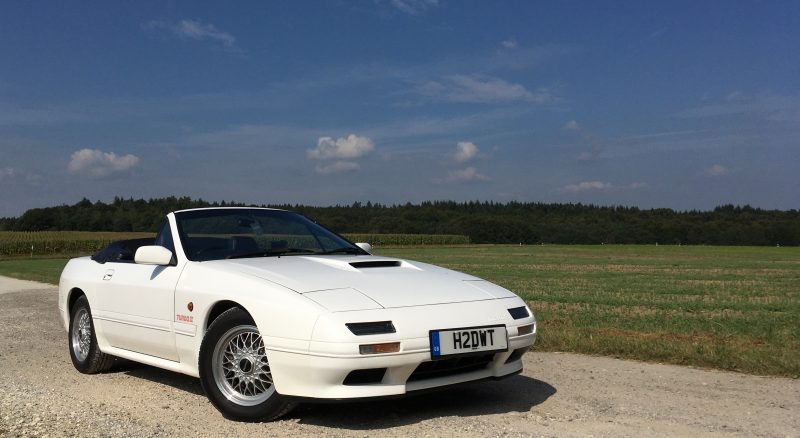
As a tour of the remarkable Frey collection in Germany showed, the rotary engine wasn’t just a quirky side-project for Mazda but a mainstay of its range from the 1960s all the way until the 1990s, finding its way into everything from the expected sports cars to economy vehicles, pickups, enormous American saloon cars and even a bus. But it’s the RX-7 that served as the figurehead for the longest time – a front-engined, rear-wheel drive sports car in the traditional, but far from conventional mould. The model lasted 24 years across three generations, from the pretty SA22C to the truly beautiful FD that bowed out in 2002.
Sitting in the middle was the FC generation car. It was a prime slice of 1980s wedge; squint a bit and you might see some Porsche 944 in its shape, and while the visual similarities between older Japanese cars and Western ones have always been overplayed, the pair share more than a few stylistic touches, from the straight-edged wheel arch blisters, to that wraparound rear screen, and of course a set of oh-so-80s pop-up headlights.
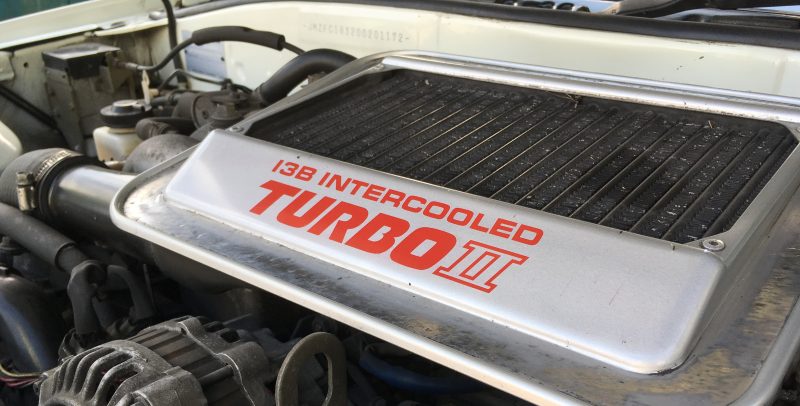
The FC RX-7 was larger and heavier than its predecessor, also following the trend of the 944 that had grown more powerful and luxurious over its own 924 forebear. A squared-off dashboard was standard fare for the time, and the central tachometer not just ideal for keeping tabs on the rotary engine up front but also a statement of intent – one Mazda has carried through to some of its current lineup today.
Ah, that engine though. Designated 13B, in traditional terms it displaces 1.3 litres between two rotors, and makes a modest 146bhp in non-turbo form. The 1980s was the era of the turbocharger though, and here the 13B displayed its potential, making 182bhp in early iterations and up to 234bhp in later models.
If you were to choose an FC to drive you’d undoubtedly opt for a Turbo. What you might not choose is the convertible, which always carries the stigma of those more concerned by appearance than performance. Less still a white convertible – today white is rather fashionable and confers an air of sophistication, but back in the 80s it was viewed in much the same way as white stilettos.

Yet sitting there, roof down on a balmy day in Germany, Mazda UK’s stiletto-white Turbo II convertible couldn’t be more appealing. If anything, the flat rear deck and electrically-retractable soft top work perfectly with the wedgy shape, accentuating the blocky rear lamp clusters, a counterpoint to the sharp nose with its pop-ups, sidelights, indicator lenses and of course that large bonnet scoop for the top-mounted intercooler.
Actually, the 80s talk is a bit of a white lie. The FC is undoubtedly a car of the 1980s but Mazda UK’s model is a 1991, sold shortly before the third-generation RX-7 arrived in 1992. As such it makes the full 234bhp at a modest 6500rpm, though its five-second-flat 0-60mph time is far from modest and puts it among some fairly brisk modern machinery. As does the 159mph top speed, while an 1163kg kerb weight promises good things for handling.
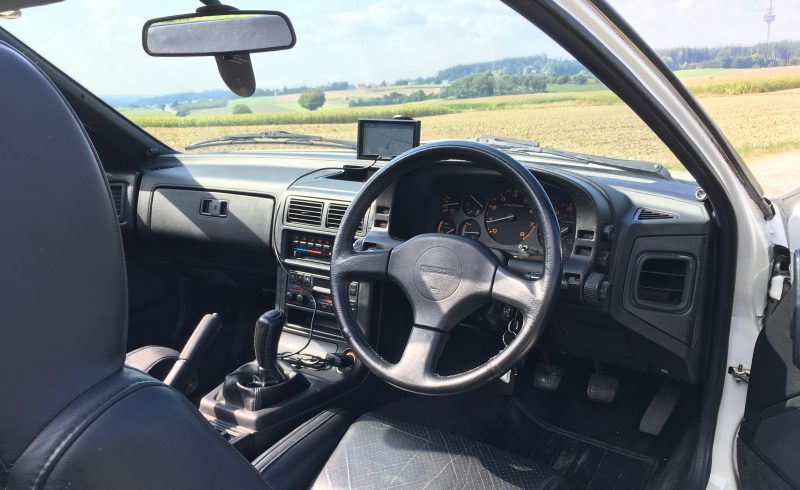
In convertible form though, it’s also a hell of a cruiser. The dark trim of the cabin is less of an issue when warm rays are permeating every corner, and highlight some of the unusual but appealing ergonomic quirks that Japan seemed keen on at the time – the indicator stalk, for instance, is a small lever mounted to the instrument binnacle but still within fingertip reach, and every other control you’d normally find on a stalk is instead found as a rotary knob attached to either side of the same binnacle.
The rotary engine is as smooth and sweet-spinning as legend would have it. You hear the rise and fall of revs more than you feel it, any vibrations at such a high frequency compared to a piston engine that the normal old-car fizz of writhing mechanicals doesn’t register through the gear lever and pedals as you’d expect. It also means the engine is in its sweet spot at whatever revs you choose to cruise. There’s no real penalty (other than economy, you’d assume) for sitting at say, 4500rpm, because the rotors are spinning along an axis rather than thrashing up and down like pistons.

Squeeze the throttle for the first time and… whoo-eee, it’s rapid too. It’s driveable at low revs, but somewhere around three grand a surge begins to build, climbing in intensity over the next few thousand rpm and not really tailing off before the gear change buzzer chimes in and you snick into the next ratio. The sound is unusual, a smooth, videogamey whirr just audible behind the lower but louder tone emanating from the exhaust, but the rush of wind and the sensation of being squeezed into your seat both ramp up the excitement factor.
Rag-tops may indeed be more wobbly than their fixed-roof counterparts, but any body flex in this RX-7 is more apparent in a slight lack of precision in corners than it is in rattling trim or a shuddering windscreen frame. It’s definitely less a sports car in the corners than on the straights, and maybe that’s the tradeoff for going open-top. The coupe’s probably sharper, but on a sunny day, would it have really been as enjoyable?
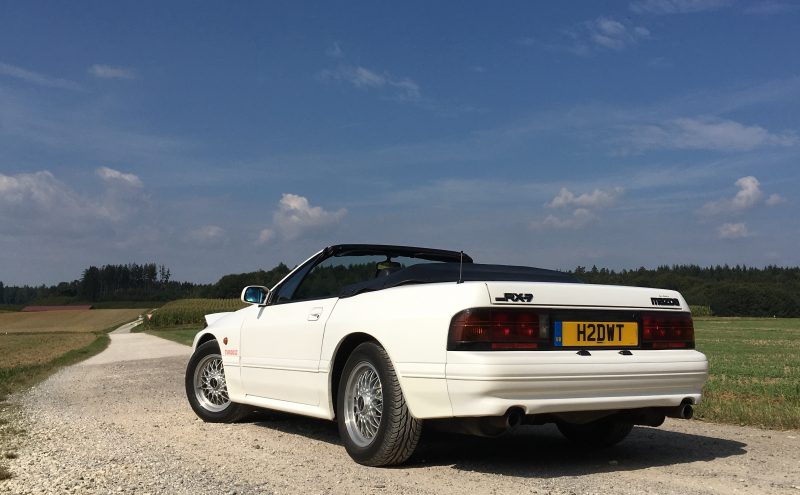
The return of the rotary engine is something to celebrate, and perhaps in its new hybrid home it’ll have fewer of the disadvantages traditionally associated with the layout – a thirst for oil, a spectacular thirst for fuel, and a need for incredibly attentive maintenance. But I do hope Mazda sees fit to put it in a sports car too, one last time, and if you can drop the roof on that sports car, all the better…

